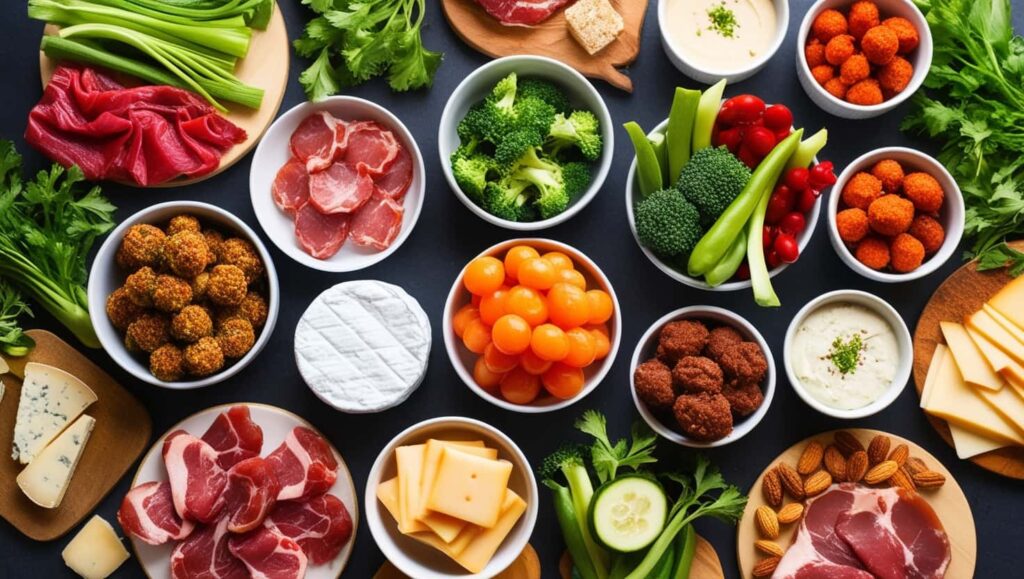Table of Contents
ToggleImagine standing in front of your kitchen, feeling overwhelmed by the thought of completely overhauling your eating habits. You’ve heard about the keto diet and its potential benefits, but where do you even begin? Don’t worry – we’ve got you covered with this comprehensive guide to Keto for Dummies.
What is the Keto Diet?
The ketogenic diet, or keto for short, is a low-carb, high-fat eating plan designed to shift your body’s primary fuel source from carbohydrates to fat. By drastically reducing your carb intake and increasing healthy fats, your body enters a metabolic state called ketosis, where it becomes incredibly efficient at burning fat for energy.
Getting Started: Your Keto Checklist

Before diving into the world of keto, it’s essential to prepare yourself for success. Here’s a checklist to help you get started:
- Prepare your kitchen
- Prevent keto flu
- Transition gradually
- Balance subtracting carbs and adding fats
- Know what to measure
- Inform family and friends
1. Prepare Your Kitchen
One of the first steps in your keto journey is to overhaul your kitchen. Remove high-carb foods and stock up on keto-friendly options. This process can be time-consuming, but it’s crucial for setting yourself up for success.
2. Prevent Keto Flu
As your body adjusts to its new fuel source, you may experience what’s known as “keto flu.” Symptoms can include fatigue, headaches, and irritability. To minimize these effects:
- Stay hydrated
- Maintain electrolyte balance
- Get plenty of rest
3. Transition Gradually
Instead of going cold turkey, consider gradually reducing your carb intake over a week or two. This approach can make the transition smoother and more manageable.
4. Balance Subtracting Carbs and Adding Fats
Remember, keto isn’t just about cutting carbs – it’s also about increasing healthy fats. Focus on both aspects to ensure you’re getting the right balance of nutrients.
5. Know What to Measure
While tracking your progress is important, don’t become obsessed with numbers. Pay attention to how you feel, your energy levels, and overall well-being in addition to weight loss.
6. Inform Family and Friends
Sharing your keto journey with loved ones can provide accountability and support. It also helps prevent awkward situations during social gatherings.
Keto-Friendly Foods: What to Eat on a Ketogenic Diet

Understanding what foods are keto-approved is crucial for success. Here’s a breakdown of keto-friendly options:
Healthy Fats and Oils
- Butter
- Olive oil
- Avocados
- Coconut oil
- Fish oil
Proteins
- Seafood and fish (wild-caught when possible)
- Meats (grass-fed when possible)
- Eggs
Low-Carb Vegetables
- Broccoli
- Cauliflower
- Spinach
- Zucchini
- Mushrooms
Dairy
- Hard cheeses
- Heavy cream
- Unsweetened yogurt
Nuts and Seeds
- Almonds
- Walnuts
- Macadamia nuts
- Sunflower seeds
Berries (in moderation)
- Strawberries
- Raspberries
- Blueberries
Keto-Friendly Sweeteners
- Stevia
- Erythritol
- Monk fruit
Keto-Friendly Snacks: Quick and Easy Options

Having a variety of snack options is key to staying on track with your keto diet. Here are some ideas:
No-Prep Snacks
- Pork rinds
- String cheese
- Nuts and seeds
- Avocados
- Olives
Some-Prep Snacks
- Hard-boiled eggs
- Bacon
- Guacamole
- Kale chips
- Cucumber boats with cream cheese
Keto and Alcohol: Can They Mix?
While it’s best to limit alcohol consumption on any diet, you can still enjoy the occasional drink on keto. Here’s what you need to know:
Low-Carb Alcoholic Drinks
- Hard liquors (tequila, rum, vodka, gin, whiskey)
- Dry wines (red and white)
- Light beers
High-Carb Drinks to Avoid
- Sweet wines
- Sugary mixers
- Flavored alcohols
- Regular beers
Remember, alcohol can affect your body differently when you’re in ketosis. You may feel the effects more quickly, and it can temporarily halt fat burning. Always drink responsibly and in moderation.
Common Keto Challenges and How to Overcome Them

As with any major dietary change, you may face some challenges when starting keto. Here are some common issues and how to address them:
1. Keto Flu
Solution: Stay hydrated, increase electrolyte intake, and get plenty of rest.
2. Cravings
Solution: Keep keto-friendly snacks on hand and focus on nutrient-dense foods.
3. Social Situations
Solution: Plan ahead, bring your own keto-friendly dishes, or eat before events.
4. Plateau in Weight Loss
Solution: Reassess your macros, try intermittent fasting, or increase physical activity.
5. Digestive Issues
Solution: Gradually increase fiber intake and consider probiotics.
The Benefits of a Ketogenic Diet
While weight loss is often the primary goal, the keto diet offers numerous other potential benefits:
- Improved mental clarity and focus
- Increased energy levels
- Better blood sugar control
- Reduced inflammation
- Potential neuroprotective effects
Tips for Long-Term Keto Success
To maintain your keto lifestyle long-term, consider these tips:
- Meal prep to ensure you always have keto-friendly options available
- Experiment with new recipes to keep things interesting
- Listen to your body and adjust your approach as needed
- Stay hydrated and maintain electrolyte balance
- Consider cycling in and out of ketosis if it works better for your lifestyle
Conclusion: Your Keto Journey Begins
Embarking on a keto diet journey can seem daunting at first, but with the right knowledge and preparation, it can be a rewarding experience. Remember to be patient with yourself, listen to your body, and celebrate small victories along the way. Whether your goal is weight loss, improved health, or simply trying something new, the keto diet offers a unique approach to nutrition that has helped many people transform their lives.
As you begin your keto journey, keep this guide handy for reference, and don’t hesitate to seek additional support from keto communities or healthcare professionals. With dedication and the right tools, you’ll be well on your way to mastering the ketogenic lifestyle. Good luck, and happy keto-ing!
Frequently Asked Questions
How long does it take to enter ketosis?
It typically takes 2-4 days of strict carb restriction (20-50g net carbs per day) to enter ketosis, though this can vary from person to person.
Can I eat fruit on keto?
Most fruits are high in carbs, but berries can be consumed in moderation on a keto diet.
Is the keto diet safe for everyone?
While many people can safely follow a keto diet, it’s always best to consult with a healthcare professional before making significant dietary changes, especially if you have any pre-existing health conditions.
How do I know if I’m in ketosis?
Common signs include decreased hunger, increased energy, and better mental clarity. You can also use ketone testing strips or blood ketone meters for more accurate measurements.
Can I build muscle on a keto diet?
Yes, it’s possible to build muscle on a keto diet, but it may require careful planning to ensure adequate protein intake and proper training.





